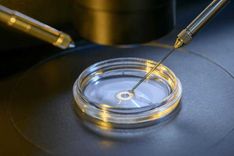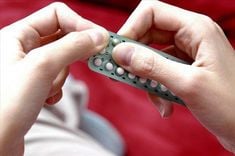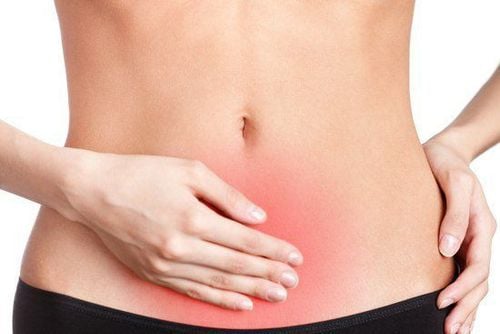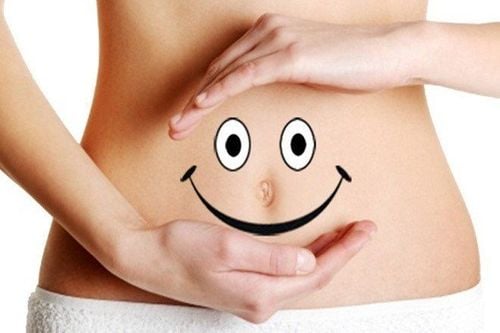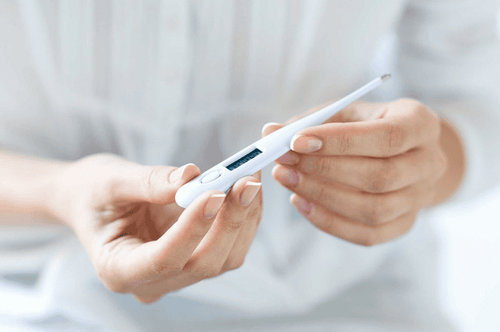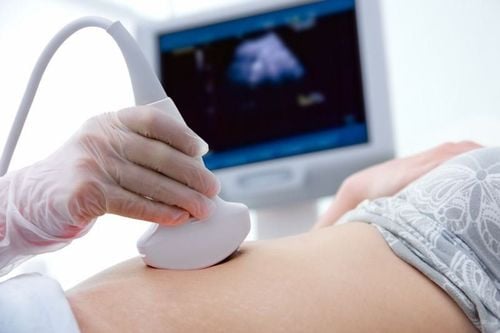This is an automatically translated article.
Pregnancy is a wish of all couples, however some of them require preparation before welcoming a new member. Therefore, calculating the date of intercourse in each cycle will partly determine the possibility of pregnancy. So having sex after ovulation get pregnant?
1. What is ovulation?
Before understanding the problem of having sex after ovulation, we need to understand the concept of ovulation and ovulation. Ovulation or ovulation is part of the menstrual cycle in women. This phenomenon occurs when an egg (or ovum) grows to a certain size, it is released by the ovary into the fallopian tube and moved into the uterus. The survival time of the egg after ovulation is about 12 to 24 hours and after that there will be 2 cases. When an egg meets a sperm, fertilization takes place and an embryo is formed. Conversely, if there is no sperm present, the mature egg will break down and be eliminated outside the body.
Under normal physiological conditions, the period of a stable menstrual cycle lasts 28 days, then ovulation will fall on the 14th day. However, in reality, each person's menstrual cycle will Not all cycles are the same and not all cycles take place exactly 28 days, but it also depends on the body, body condition and many other factors. The menstrual cycle can be longer or shorter and it is difficult to pinpoint the exact date of ovulation in each cycle. In addition, some external factors such as using birth control pills, psychological pressure or stress, being in the process of treatment for the disease and having to use many drugs... can also affect changes. Menstrual cycle, which changes the time of ovulation, comes earlier or later than usual.
Therefore, determining the exact date of ovulation will be relatively difficult. However, women can completely predict the day of ovulation if they pay attention to the following signs:
Feeling of tightness in the lower abdomen: One of the signs that predicts ovulation is mild pain in the lower abdomen or pelvis. This is completely a normal sign of ovulation and women do not need to be too worried. However, if the pain in the lower abdomen persists or is severe, it can be a warning that the body is experiencing an abnormal condition such as endometriosis or ovarian cyst. At that time, take the initiative to go to the hospital for a timely examination, diagnosis and treatment by a specialist; Appearance of cervical mucus: As ovulation approaches, female hormones undergo many changes, leading to an increase in the amount of cervical mucus. At this time, if you pay attention, you will see this mucus is the color of egg white, slightly tough and sticky on the crotch of the panties, accompanied by itching and wetness in the private area. The amount of cervical mucus in each person will be different and depends on the concentration of female hormones in the body. Physiologically, the effect of cervical mucus is to support the sperm movement into the vagina, increase the chance of meeting the egg, and screen and remove poor quality sperm; Feeling of tightness in the breasts: At the time of ovulation, women will often feel tight breasts and more sensitive nipples. The cause of this phenomenon is an increase in the level of the hormone progesterone in preparation for conception. To feel more comfortable, please wear loose, comfortable bras and combine with gentle massage movements to improve symptoms of tension and discomfort;

Cảm giác căng tức ngực là một trong các dấu hiệu của rụng trứng
Increased body temperature: When it comes to ovulation, the change in the concentration of reproductive hormones causes the body temperature to rise slightly, but not more than 1 degree Celsius. Those who have the habit of regularly monitoring body temperature will receive know this sign easily and thereby help determine the time of easy fertilization; Increased desire and need for sex: This is one of the typical signs that suggest the time of ovulation in each cycle. The cause of increased sexual desire is still due to the increased levels of female hormones, making women think about sex more and demand higher than usual. The phenomenon of increased desire and need for sex usually lasts about 5-6 days around ovulation; Sense of smell: In the second half of the menstrual cycle, a woman's sense of smell becomes more acute and sensitive, especially to pleasant scents. Therefore, when this phenomenon occurs, it signals that ovulation has taken place; Changes in the cervix; In preparation for ovulation, the cervix appears higher, softer, and wider. However, this phenomenon takes place inside the body, so women cannot see it with the naked eye, and gynecologists recommend not to check yourself by putting your hands inside because it can cause infection. and vaginal injury.
2. Determine the day of ovulation with test strips
The method of using ovulation test strips is evaluated to be very accurate in determining ovulation and can especially be applied to women with unstable menstrual cycles.
A woman's ovaries can secrete a hormone called LH (Luteinizing Hormone). In the middle of the menstrual cycle, to stimulate the ovaries to ovulate, the level of the hormone LH will increase. Applying this phenomenon, the manufacturers have created ovulation test strips through the mechanism of detecting an increase in the concentration of LH in the urine and contributing to the relatively accurate determination of the day of ovulation.
Ovulation test strips work to check the time of ovulation from the 10th day of each cycle. The use of this type of strip is similar to a pregnancy test, the user only needs to dip the test strip into the urine sample, then wait for about 5 seconds and then consider the possible results as follows:
The test strip shows 1 line is definitely not the day of ovulation; The test strip shows 1 bold line and 1 faint line indicating that it is still far from the time of ovulation; Ovulation test strips show 2 dark lines or 2 faint lines signaling the body is about to enter the time of ovulation; The ovulation test strip shows 2 lines and the lower line is darker, which means that ovulation will take place in the next 12-24 hours.
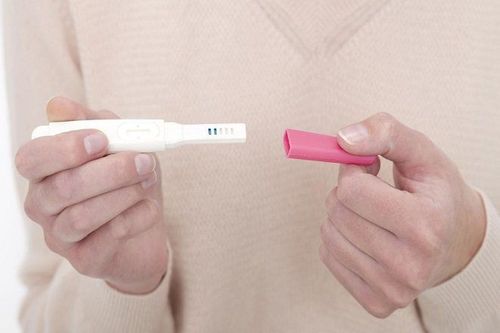
Quan hệ sau ngày rụng trứng có thai không có thể sử dụng que thử để đánh giá
3. Sex after ovulation pregnant?
Having sex after ovulation is pregnant? This is a question many people ask. Under normal conditions, the chances of getting pregnant are increased by having sex as close to ovulation as possible. Having sex on the day of ovulation gives the sperm and egg a chance to meet and form an embryo.
On the other hand, the average life time of an egg after ovulation is about 12 to 24 hours, in some cases it can last up to 48 hours, and the time sperm can survive in the vagina is about 48 to 72 hours, in particular can be up to 5 days. Therefore, some women wonder if having sex 2 days after ovulation is completely possible, but the rate is usually not high.
As mentioned above, the closer sex is to the time of ovulation, the higher the chances of getting pregnant. Therefore, many people question whether having sex after 7 days of ovulation is pregnant, the possibility of pregnancy is very low. However, this is only true for those who have regular menstrual cycles and have measures to accurately determine the day of ovulation. For those cases where the menstrual cycle changes, leading to fluctuating ovulation days, women think that if they have passed the time of ovulation and have had sex without contraception, the possibility of pregnancy can still occur.
For example, your menstrual cycle is regular for 28 days and ovulation is on the 14th day, but for some reason, the cycle suddenly lasts 35 days, leading to the 21st day of ovulation. At that time, if you assume that on the 14th day, the egg has been ovulated and think that having sex on the 21st day (ie 7 days after ovulation) will not be pregnant. However, due to the change in the cycle, the day of ovulation has changed, so even if you have sex 7 days after the normal ovulation time, you can still get pregnant.
Please dial HOTLINE for more information or register for an appointment HERE. Download MyVinmec app to make appointments faster and to manage your bookings easily.


